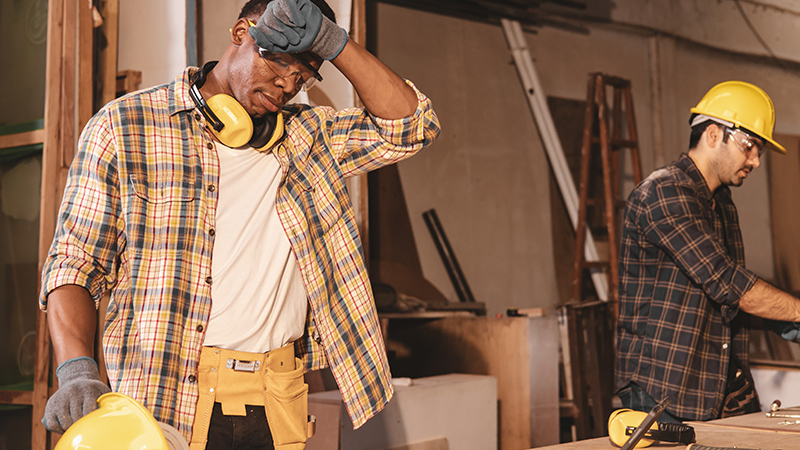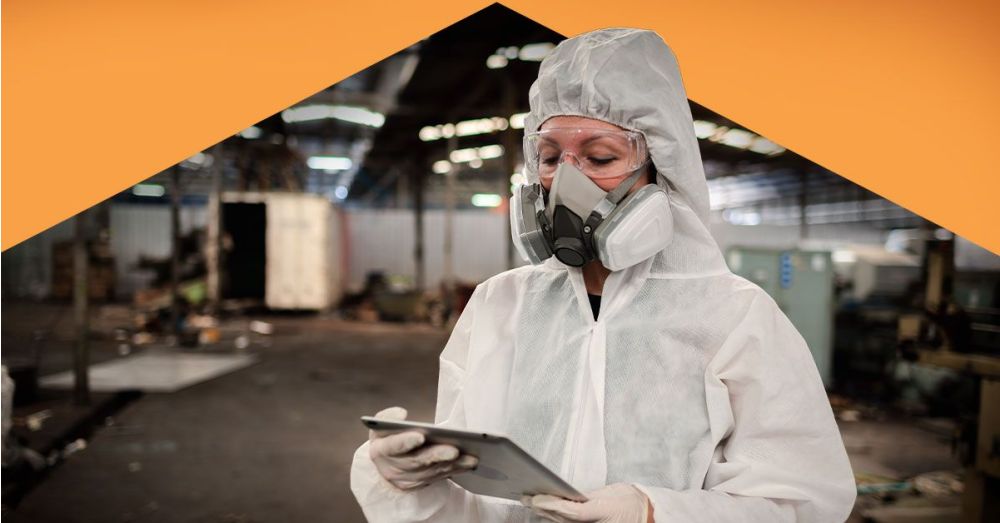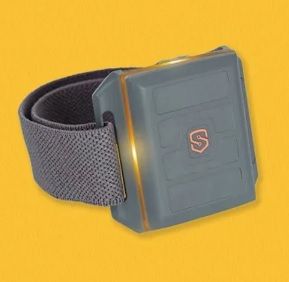How to Prevent & Monitor Heat Stress While Wearing PPE
Wearing personal protective equipment (PPE) like gloves, respirators, face shields, surgical gowns, hazmat suits is an important safety precaution for workers in a variety of industries, including emergency response, mining, chemical plants, manufacturing, production, energy, and more. This gear minimizes exposure to external hazards and helps prevent serious injuries or illnesses in the workplace.
At the same time, PPE can also increase the risk of heat-related injuries, including heat stress and even heat stroke.
It’s important that companies and employees in these situations take precautions like providing adequate rest and hydration breaks, improving workplace ventilation, and wearing personal heat stress monitors to prevent heat stress in the workplace.
Heat Stress & PPE: What Are the Risks?
Heat stress, heat stroke, and other heat-related illnesses are a threat for anyone working in hot environments without adequate hydration, ventilation, and rest breaks to cool down. However, when those working in the heat must also wear PPE to protect themselves from hazardous or toxic materials, the likelihood of heat stress is much higher.
Unless PPE is specifically designed to prevent the buildup of heat, it holds excess moisture and heat inside the garment. As the wearer releases heat from the body through sweat, the vapor cannot evaporate into the atmosphere and is instead contained inside the PPE, leading to the worker getting hotter even faster.
As the core body temperature rises, they are at risk for heat stress—and, if left untreated, heat stroke.


6 Ways to Prevent Heat Stress While Wearing PPE
Companies, managers, and supervisors—as well as workers who wear PPE—should be aware of the dangers of heat-related illnesses as well as take the necessary steps to avoid heat stress. Follow these tips to prevent heat stress in workers wearing PPE.
1. Improve Workplace Conditions
Some workplace environments can be modified to reduce the risk of heat injury while wearing PPE. Proper ventilation, industrial fans, air conditioning, and shade can all contribute to a safer workplace. In situations where changing workplace conditions is not practical, dedicate a cool room or area where workers can take rest breaks, get hydrated, and reduce elevated core body temperatures.
2. Educate Workers About Heat Stress & Common Symptoms
Both supervisors and workers wearing PPE must be trained to recognize the signs of heat-related illnesses so they can promptly seek medical help as needed. Common symptoms include the following:
- Thirst
- Headaches
- Dizziness
- Nausea or vomiting
- Confusion or disorientation
- Light-headedness
- Wet skin
- Heat rash
- Heat cramps
Additionally, request that workers use a buddy symptom and monitor each other for these symptoms.
3. Encourage Adequate Hydration
Ensure workers wearing PPE have easy access to adequate amounts of cool (< 59°F), potable water near their worksite, and encourage them to stay hydrated.
According to the National Institute for Occupational Safety and Health (NIOSH), two hours or less of moderate activity in the heat requires an average of one 8 oz. cup of water every 15 to 20 minutes. Higher activity levels, or when sweating lasts for several hours, hydrate with balanced sports drinks containing electrolytes.
4. Provide Regular Rest Breaks
Employers should make sure to provide regular rest breaks for workers to hydrate and cool down, especially when PPE is required. During these rest breaks, workers should move to a cool environment, remove PPE if possible to do so safely, and apply cold packs or cool, wet towels.
5. Choose Cooling PPE
While many types of PPE trap heat and therefore increase the wearer’s risk of heat-related illnesses, cooling PPE is a more lightweight and breathable option. This type of PPE allows heat and moisture vapor to escape. Other options include PPE with auxiliary cooling systems or personal cooling systems that use water, air, or cooling garments to keep core body temperatures down.
6. Wear Personal Heat Stress Monitors
Personal heat stress monitors are small, lightweight, wearable devices that enable workers to monitor their body temperature as well as certain environmental factors like relative humidity and radiant heat. The monitors alert the wearer when conditions reach levels that indicate a risk of heat-related illness.
Wearing a personal heat stress monitor is an effective way to monitor and prevent heat stress.
The Best Personal Heat Stress Monitor
The Slate Safety BANDV2 Personal Heat Stress Monitor is an industry-leading alert system for heat stress and overexertion in the workplace. The sensors measure data like core body temperature, exertion, and heart rate in real-time to determine the wearer’s risk of heat-related illnesses such as heat exhaustion, heat stress, or heat stroke.
When wearing the device on the upper arm (like a fitness tracker), workers will get alerted when they are at risk of heat injury so they can take appropriate action—like hydrating, removing PPE, and taking a break—to reduce the risk of heat stress.
With the Slate Safety BANDV2 Personal Heat Stress Monitor, managers and supervisors can view the status of any wearer on their team, no matter where they are located.
Promote Safety with High-Quality Heat Stress Monitoring Equipment at RAECO Rents
At RAECO Rents, we have the latest heat stress monitoring equipment for industry professionals. Our goal is to provide you with the devices you need to quickly and accurately monitor heat in both indoor and outdoor workplace environments. With the data provided by our personal heat stress monitors, you can take action to protect your employees and help prevent heat-related injury.
When you rent equipment from RAECO Rents, you will receive clean, operable, high-quality instruments. We proudly offer an Instant-On guarantee and after-hour support, and we are determined to make your rental experience easy every step of the way.
Contact our rental service team today to get help finding high-quality heat stress monitoring equipment.




